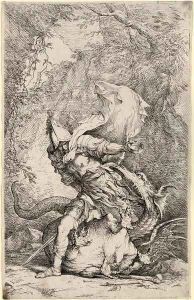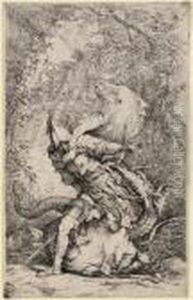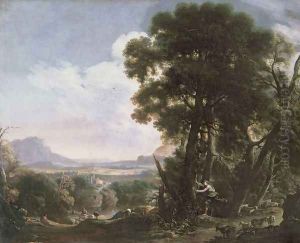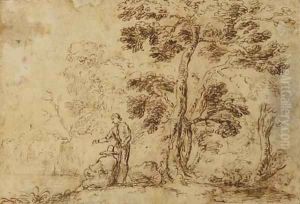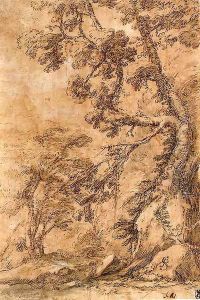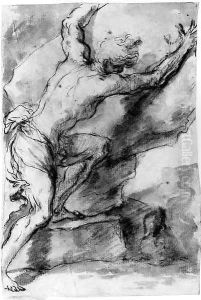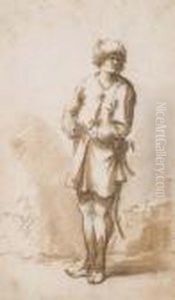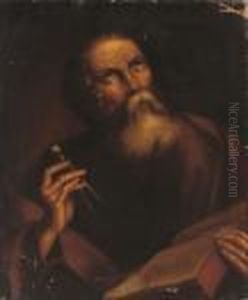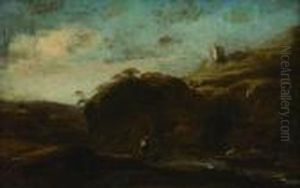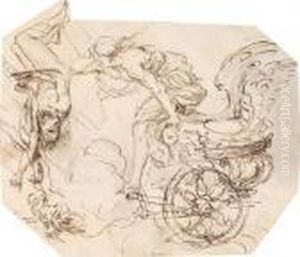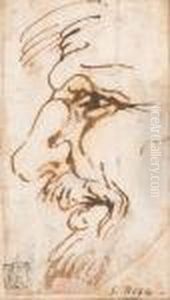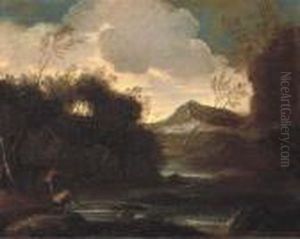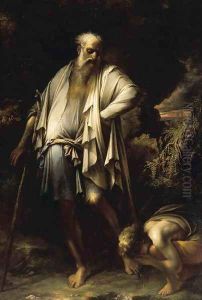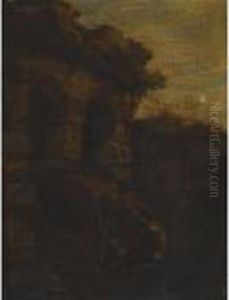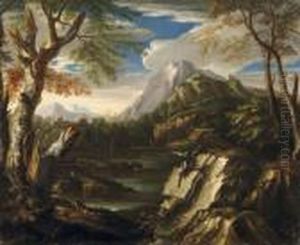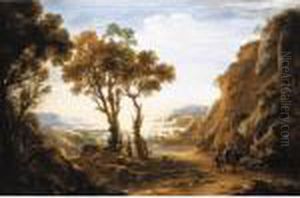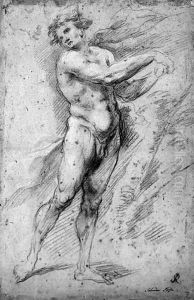





A nude turned to the left, his hands tied to a tree Study for Milo of Croton
-
About Reproduction
Discover the allure of art with our faithful reproduction of "A nude turned to the left, his hands tied to a tree Study for Milo of Croton", originally brought to life by the talented Salvator Rosa. Unlike posters or prints, our hand-painted oil painting breathes an unique sense of depth and texture into your space. Every detail, every stroke, and every texture is meticulously recreated, paying the perfect homage to Salvator Rosa and his artistic vision.
Owning this piece is more than just decoration - it's a statement of your refined taste in art. Let the vibrant colors and intricate details of this replica serve as a daily reminder of the beauty in our world. Elevate your decor and appreciate the richness of art with our replica of this masterpiece.
-
Painting Description
"A Nude Turned to the Left, His Hands Tied to a Tree: Study for Milo of Croton" is a notable drawing by the Italian Baroque painter Salvator Rosa, created as a preparatory study for his depiction of the ancient Greek athlete Milo of Croton. This artwork exemplifies Rosa's skill in capturing the human form and his interest in dramatic, often violent, mythological and historical subjects. The drawing portrays a muscular male figure, presumably Milo, in a state of tension and vulnerability, with his hands bound behind him to a tree. The pose suggests struggle and suffering, themes that are recurrent in Rosa's oeuvre.
Salvator Rosa (1615–1673) was an influential artist, poet, and actor, known for his romantic and often tempestuous landscapes, as well as his allegorical and mythological scenes. His works are characterized by their dynamic compositions, expressive figures, and a penchant for the depiction of the sublime and the grotesque. Rosa's Milo of Croton is based on the legend of the ancient wrestler who was said to have been devoured by wolves after becoming trapped in the trunk of a tree he attempted to split with his bare hands. The story, which was popular in classical literature and art, symbolized the transience of physical strength and the inevitability of fate.
The study, executed in a confident, free-hand manner, reflects Rosa's mastery of anatomy and his ability to convey emotional intensity through posture and the play of light and shadow. While the final painting that this study served to prepare for may not survive or be known, the drawing itself provides valuable insight into Rosa's artistic process and the thematic preoccupations that drove much of his work. It remains an important piece within the broader context of 17th-century Italian art, offering a glimpse into the preparatory practices of the period and the enduring fascination with classical themes.
Held in various collections over the centuries, the drawing is an object of interest for scholars studying Baroque art and those examining the influence of classical antiquity on later European artistic traditions. It stands as a testament to Salvator Rosa's enduring legacy as an artist who was not only a painter but also a significant figure in the intellectual and cultural milieu of his time.
-
Lead Time & Shipping
When you order this oil painting replica, it typically takes 2-3 weeks to paint. If the artwork is more complex, it might need a little more time to ensure the best quality. Once it's ready, we'll send you a photo for your approval. After you give the green light, we'll ship it to you for free.
-
Return & Refund
We believe in the quality of our hand-painted oil painting reproductions, and your satisfaction is our priority. If for any reason, you are not completely satisfied with your purchase, we offer a 45-day return policy. You can return your artwork within 45 days of receipt and receive a full refund. Please note that the artwork must be returned in the original packaging and in the same condition as it was received.





